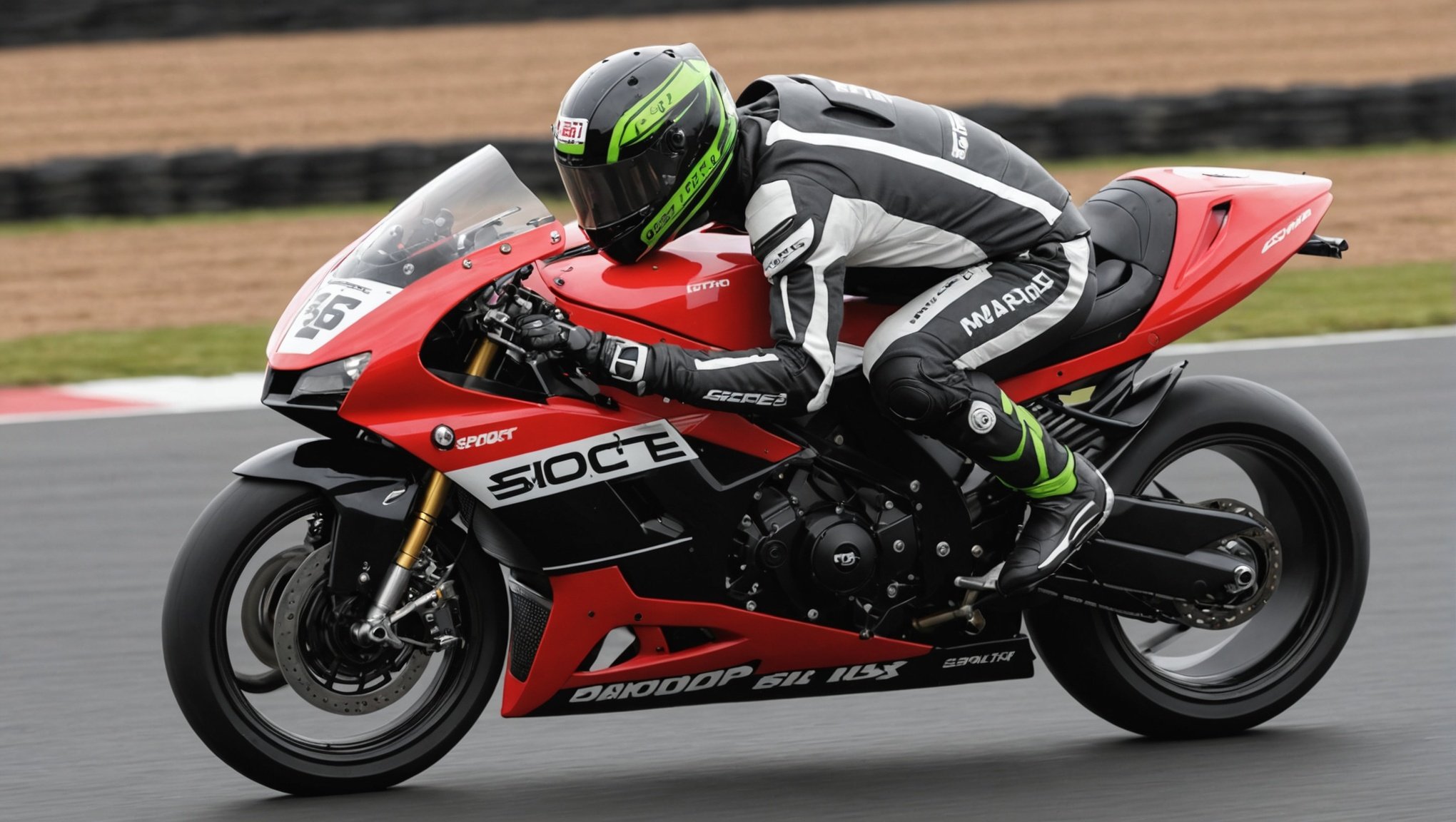High-speed racing in the UK demands precision and performance, making aerodynamic enhancements vital for your sport bike. Understanding how factors like airflow, drag reduction, and weight distribution influence speed can take your racing experience to the next level. This guide offers practical insights and strategies to optimize your bike’s aerodynamics, ensuring you dominate the track. Achieving peak performance isn’t just about power; it's about mastering the science of speed. Get ready to unlock your bike's potential and leave your competition in the dust.
Understanding Aerodynamics in Sport Bikes
Aerodynamics plays a crucial role in the performance of sport bikes, especially in high-speed racing. The design of a motorcycle is meticulously crafted to minimize air resistance and improve speed. But why is aerodynamics so important?
In parallel : Rev Up Your UK Sport Bike: Will a Clutch Upgrade Enhance Your Lap Times?
In high-speed racing, aerodynamics can be the difference between winning and losing. The basic principles of aerodynamics focus on reducing drag and controlling lift. Drag is the force that opposes the bike's motion through the air, while lift can cause instability. By optimizing the shape and position of the bike and rider, designers aim to reduce drag and manage lift effectively.
A streamlined design helps in cutting through the air more efficiently, allowing sport bikes to maintain higher speeds with less effort. The position of the rider also significantly impacts aerodynamics. A tucked position reduces frontal area and drag, enhancing speed.
In parallel : Transform Your Sport Bike’s Suspension: Ultimate Guide to Perfecting Setup for UK Track Days
Moreover, components like fairings and windscreens are designed to channel airflow smoothly over the bike, minimizing turbulence. This not only boosts speed but also improves fuel efficiency and stability at high speeds.
In essence, understanding and applying the principles of aerodynamics is vital for achieving peak performance in sport bikes, making it a key focus for manufacturers and racers alike.
Key Aerodynamic Enhancements for Sport Bikes
In the quest for speed and efficiency, aerodynamic modifications are essential for sport bikes. These enhancements are designed to refine the bike's interaction with air, leading to notable performance enhancements.
Common Aerodynamic Enhancements
Several modifications are frequently employed to optimize aerodynamics. Fairings and windshields are among the most effective. Fairings streamline the bike's shape, reducing drag by allowing air to flow smoothly over the surface. Similarly, windshields direct airflow over and around the rider, minimizing resistance and instability.
Effectiveness of Fairings and Windshields
Fairings and windshields are not just for aesthetics; they play a critical role in performance. By reducing drag, these components enable the bike to achieve higher speeds with less effort. Moreover, they enhance stability, particularly at high velocities, by managing airflow and reducing turbulence.
Role of Body Position
The rider's body position is crucial in reducing drag. A tucked position, where the rider leans forward and lowers their body, decreases frontal area exposure. This position allows the bike to slice through air more effectively, enhancing speed and control. Adjusting body position strategically can significantly impact overall performance, making it a vital consideration for racers and enthusiasts alike.
Detailed Guide to Aerodynamic Modifications
When it comes to sport bikes, modification techniques play an essential role in enhancing aerodynamics. This guide offers a technical overview of key modifications that can significantly improve performance.
Fairing Design
Fairing design is a critical aspect of aerodynamic modification techniques. The goal is to streamline the bike's silhouette, reducing drag and improving speed. Fairings should be crafted from lightweight materials to avoid adding unnecessary weight, which could counteract the aerodynamic benefits. When installing fairings, ensure they fit snugly to prevent air from getting trapped, which could increase drag instead of reducing it.
Winglets and Spoilers
Winglets and spoilers are other effective modification techniques. They help manage airflow by creating downforce, which enhances stability at high speeds. Proper installation is crucial; they must be positioned to balance the bike's weight distribution without causing excess drag. These components can dramatically improve cornering abilities and overall handling, making them a valuable addition for serious racers.
Underbody and Exhaust Modifications
Underbody and exhaust modifications focus on smoothing airflow beneath the bike. A well-designed underbody panel can reduce turbulence, while a streamlined exhaust system minimizes drag. When considering these modifications, ensure compatibility with your bike's existing setup to avoid performance issues. These changes not only enhance speed but also contribute to better fuel efficiency.
Expert Tips for Maximizing Aerodynamic Performance
To truly elevate the aerodynamic performance of your sport bike, insights from professional racers and engineers are invaluable. These experts emphasize the importance of precision and attention to detail in every modification.
Insights from Professionals
Professional racers often highlight the significance of testing and tuning. Each modification, whether it's a new fairing or a spoiler, should be rigorously tested under various conditions. This ensures that the changes genuinely enhance performance rather than inadvertently increasing drag or instability.
Common Mistakes to Avoid
One frequent error is neglecting the balance between aerodynamic efficiency and weight. Adding components like winglets or fairings without considering their weight can negate the aerodynamic benefits. It’s crucial to use lightweight materials and ensure proper installation to maintain the bike's agility.
Importance of Testing and Tuning
Testing is not a one-time event but an ongoing process. Adjustments should be made based on real-world performance data. Tuning involves fine-tuning the bike's setup to suit specific track conditions or racing styles, ensuring that every element works in harmony for optimal speed and control.
By following these expert tips, riders can significantly enhance their bike's aerodynamic performance, ultimately leading to better speed and efficiency on the track.
Case Studies: Successful Aerodynamic Enhancements
Exploring real-world examples of sport bikes with notable aerodynamic modifications can provide valuable insights into performance improvements. These case studies highlight how strategic enhancements can lead to significant gains in speed and efficiency.
Profiles of Sport Bikes with Notable Aerodynamic Modifications
One prominent example is the Yamaha YZF-R1, renowned for its innovative fairing design. This modification has reduced drag considerably, allowing the bike to achieve higher speeds with less effort. Similarly, the Ducati Panigale V4 features advanced winglets, which enhance stability by creating downforce, particularly during high-speed cornering.
Analysis of Performance Improvements Achieved
In these cases, the aerodynamic modifications have resulted in measurable performance improvements. For instance, the Yamaha YZF-R1's streamlined fairings have not only boosted speed but also improved fuel efficiency by minimizing air resistance. The Ducati Panigale V4's winglets have significantly enhanced handling, providing riders with greater control and confidence on the track.
Lessons Learned from Real-World Testing
These case studies underscore the importance of real-world testing. Testing has shown that even minor tweaks in aerodynamics can lead to substantial gains. The key takeaway is the need for a balanced approach, ensuring that modifications do not compromise other aspects of bike performance.
Legal Regulations for Racing Bikes in the UK
In the UK, racing regulations play a pivotal role in determining what modifications are permissible for sport bikes, particularly concerning aerodynamics. Understanding these legal frameworks is essential for any racer or enthusiast looking to optimise their bike's performance while ensuring legal compliance.
Overview of UK Regulations Impacting Aerodynamic Modifications
The UK has specific rules governing the extent of aerodynamic modifications allowed on racing bikes. These regulations are designed to ensure safety and maintain a level playing field in competitive racing. Key areas include restrictions on the size and shape of fairings, winglets, and other aerodynamic enhancements. Compliance with these rules is mandatory for participation in sanctioned racing events.
Compliance Requirements for Racers
Racers must ensure their bikes meet all legal compliance requirements before entering any competition. This includes adhering to guidelines on aerodynamic modifications and ensuring that all components are approved by racing authorities. Regular inspections and certifications may be required to verify that the modifications do not exceed legal limits.
Consequences of Illegal Modifications
Failure to comply with racing regulations can lead to severe consequences. Illegal modifications may result in disqualification from races, fines, or even bans from future events. It is crucial for racers to stay informed about current regulations to avoid any penalties and ensure fair competition.
Comparing Performance Across Different Sport Bike Models
When evaluating sport bike models, understanding the performance comparison is crucial for making an informed decision. Different models offer varying aerodynamic features that significantly impact speed, handling, and stability.
Aerodynamic Features in Popular Models
Popular sport bike models like the Yamaha YZF-R1 and Ducati Panigale V4 are renowned for their advanced aerodynamic designs. The Yamaha YZF-R1, for instance, boasts innovative fairings that reduce drag, enhancing speed and fuel efficiency. Conversely, the Ducati Panigale V4 incorporates winglets that create downforce, improving stability during high-speed maneuvers.
Key Performance Metrics
When comparing sport bikes, consider metrics such as maximum speed, handling precision, and stability. Speed is often the primary focus, but handling and stability are equally important for safe and efficient riding. A bike with superior aerodynamics will typically exhibit enhanced performance across these metrics.
Recommendations for Riders
Choosing the right sport bike model depends on your riding style and racing goals. For those prioritizing speed, a model with streamlined fairings like the Yamaha YZF-R1 may be ideal. Riders seeking enhanced stability and control might prefer the Ducati Panigale V4 with its effective winglets. Tailor your choice to your specific needs to optimize your racing experience.
Visual Aids and Resources for Aerodynamic Modifications
Visual learning is crucial for grasping the complexities of aerodynamic modifications in sport bikes. Diagrams and videos serve as invaluable tools, providing clear, step-by-step guidance on how to implement changes effectively. These visual aids help enthusiasts and racers understand the intricate details involved, from fairing adjustments to installing winglets.
For those eager to delve deeper into modification techniques, several resources are recommended. Online platforms like YouTube offer instructional videos from experienced professionals, breaking down each process into manageable steps. Websites dedicated to motorcycle engineering often provide detailed diagrams and guides, making it easier to visualize and execute modifications.
Finding expert help is essential for more complex modifications. Forums and online communities can connect you with seasoned racers and engineers willing to share their insights and experiences. Additionally, attending workshops or seminars hosted by motorcycle manufacturers or racing teams can offer hands-on learning opportunities.
By utilizing these visual aids and resources, individuals can enhance their understanding and execution of aerodynamic modifications, leading to improved performance and safety on the track. Whether you're a novice or a seasoned racer, these tools are indispensable for achieving optimal results.
Future Trends in Aerodynamics for Sport Bikes
As the world of motorcycle racing evolves, Future Innovations are set to redefine the boundaries of speed and efficiency. The integration of emerging technologies is at the forefront, promising to revolutionize how bikes are designed and perform.
Upcoming technologies in bike design are focusing on enhancing aerodynamics through advanced materials and smart engineering. Concepts like active aerodynamics, which adjust in real-time to optimize airflow, are being explored. These innovations could lead to more dynamic bikes capable of adapting to varying conditions, improving both speed and control.
The use of new materials is another area of intense research. Lightweight composites are being developed to reduce drag without compromising strength. These materials could significantly impact the design and efficiency of future models, leading to more sustainable and faster machines.
Predictions for the future of high-speed racing in the UK suggest a shift towards energy-efficient technologies. With environmental concerns at the forefront, the demand for eco-friendly yet powerful bikes is rising. The future of racing is likely to embrace these innovations, pushing the boundaries of what's possible while maintaining a focus on sustainability and performance. As these emerging technologies evolve, the landscape of racing is set for a thrilling transformation.













